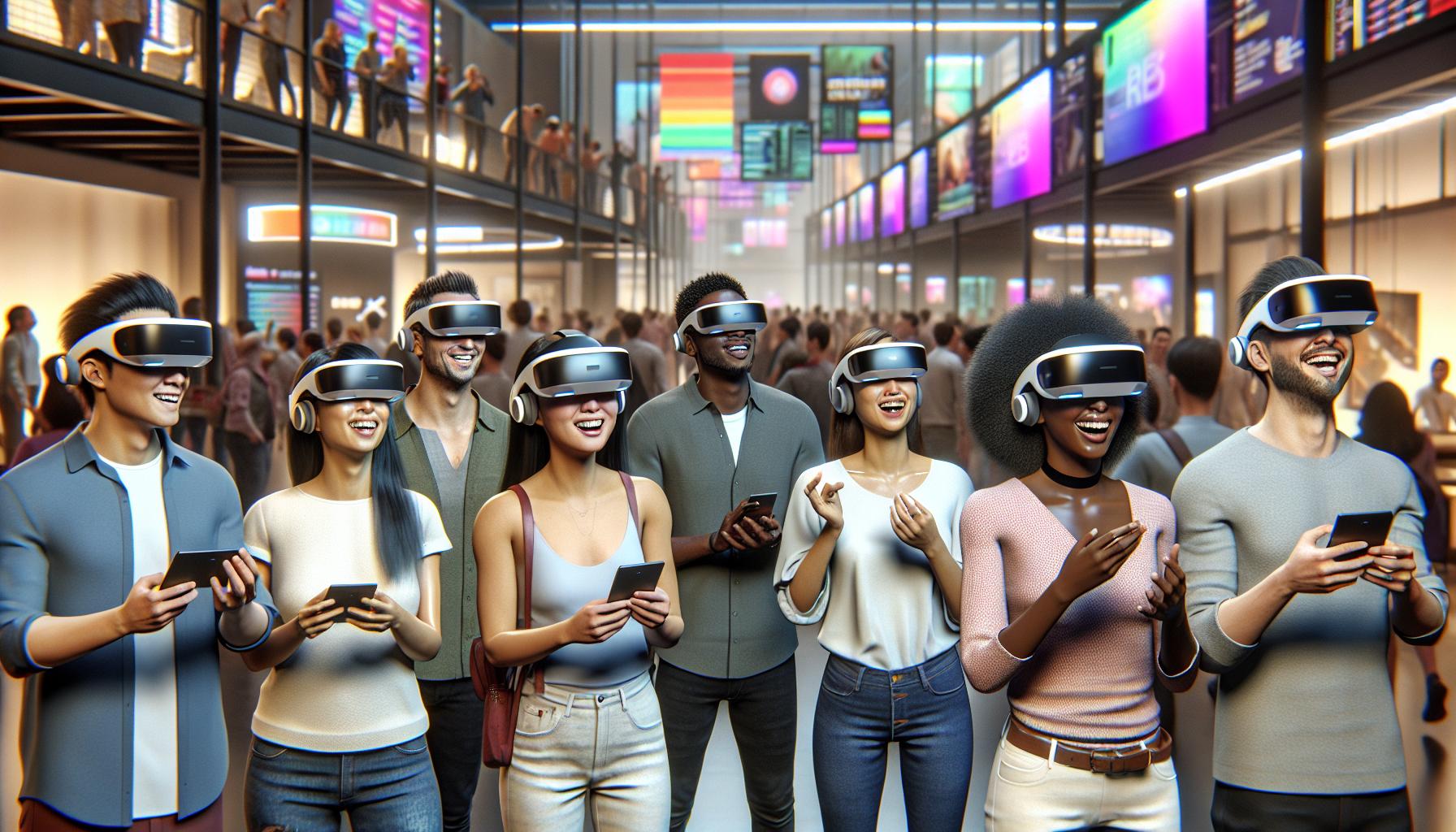In a world where virtual and reality often collide, head augmented reality software has been the shining star of innovation. But just when it seemed like it was ready to take over the universe, it’s stepping down. Yes, folks, the tech titan that promised to change how we see the world is taking a backseat, and it’s got everyone scratching their heads—figuratively and literally.
Head Augmented Reality Software Stepping Down
Head augmented reality software integrates digital elements into the user’s field of view, enhancing perceptions of the real world. This technology relies on advanced algorithms, computer graphics, and sensors to overlay information seamlessly. Various industries, including gaming, healthcare, and education, adopted head augmented reality for training simulations or interactive experiences.
Developments in head-mounted displays significantly influenced user experience. Manufacturers designed lightweight hardware with improved optics, which facilitated longer use and greater immersion. User interfaces evolved to include voice activation and gesture controls, increasing accessibility and reducing reliance on physical input devices.
Numerous applications emerged from this technology. In gaming, developers created immersive worlds, allowing players to interact with virtual characters and objects. Healthcare utilized augmented reality for surgical simulations, enabling trainees to practice complex procedures without risk. Educational programs implemented AR for interactive learning, engaging students with visual aids and simulator exercises.
Despite this initial success, head augmented reality began to experience setbacks. Market saturation occurred as numerous companies launched competing products, leading to confusion among consumers. Additionally, consumer interest fluctuated, driven by privacy concerns and the lack of compelling content. As a result, some leading firms refocused their strategies away from head-mounted solutions, opting for other platforms with wider appeal.
Investment in head augmented reality software decreased as developers prioritized more established technologies. Shifts in demand toward mobile and web applications indicated a preference for convenience and ease of use. These factors contributed to the gradual decline in the prominence of head augmented reality software, prompting industry observers to question its future viability.
Reasons for Stepping Down

Head augmented reality software is stepping back from prominence due to several interconnected factors. These factors include market saturation and technical challenges.
Market Saturation
Market saturation has diluted the appeal of head augmented reality. Numerous companies entering the market created fierce competition, leading to a flood of similar products. Consumer fatigue emerged as most offerings failed to differentiate themselves significantly. Many users began to lose interest because innovations did not align with expectations for a transformative experience. As traditional gaming and mobile applications grew, they absorbed user attention and investment. Increasingly, firms are reallocating resources toward established platforms that demonstrate consistent engagement. The abundance of options ultimately left consumers overwhelmed, diminishing demand for head-mounted displays.
Technical Challenges
Technical challenges contribute significantly to the decline of head augmented reality. Many users experienced discomfort with prolonged usage of headsets, impeding widespread adoption. Developing intuitive interfaces required substantial resources yet often fell short of user expectations. Achieving seamless integration of digital elements into natural environments presented persistent hurdles. Manufacturers struggled to ensure compatibility across various devices, complicating the user experience. Limited battery life remained a critical issue as well, restricting usability in extended sessions. Addressing these challenges requires time and substantial investment, making some companies hesitant to commit resources to head-mounted solutions.
Impact on the Industry

Head augmented reality software is experiencing significant repercussions in the tech landscape. This downturn influences various sectors reliant on immersive experiences.
Innovations and Developments
Innovations in augmented reality once promised revolutionary changes. Companies focused on enhancing user experience with advanced optics and lightweight designs. Developers worked on integrating artificial intelligence to create more interactive environments. However, a shift in priorities and funding emerged as interest waned. Challenges like device comfort and battery life management became critical points for manufacturers. Adapting to user needs remains essential, yet many are still grappling with these technical hurdles. A commitment to solving these issues could revive interest in the technology.
Competitor Advantage
Competitor advantage has shifted significantly due to the decline of head augmented reality software. Traditional gaming platforms and mobile applications captured greater market share. These environments offer engaging experiences with less intrusive technology. Firms that focus on familiar interfaces and accessibility find success. Users gravitate towards options that marry entertainment with convenience. Innovative businesses are now investing in augmented reality applications that align with consumer preferences, leaving head-mounted displays trailing behind. Understanding changing user expectations remains vital for companies hoping to maintain relevance in this evolving market.
Future Prospects

The outlook for head augmented reality software faces numerous challenges but also unveils potential avenues for growth. Shifts in technology and consumer preference shape the future landscape.
Emerging Technologies
Various emerging technologies hold promise for revitalizing head augmented reality. Developments in artificial intelligence enhance the user experience by providing more personalized interactions. Integration of machine learning further improves content relevance, tailoring digital content to user interests. Virtual reality advancements may allow seamless transitions between augmented and fully immersive environments, broadening application scopes. Additionally, improvements in battery technology could address usability concerns associated with prolonged headset use. As augmented reality hardware becomes lighter and more comfortable, a wider audience may embrace the technology. Continued innovation remains vital for capturing interest in a competitive landscape.
Consumer Adoption
Consumer adoption trends indicate evolving preferences that impact head augmented reality’s future. Increased focus on privacy and user experience drives demand for safer and more intuitive applications. Platforms providing engaging content attract users seeking entertainment and information. Interest in mobile augmented reality applications suggests a shift toward accessibility over cumbersome headset usage. Additionally, successful products focus on familiar interfaces, minimizing the learning curve for new users. By understanding evolving consumer shifts and addressing fundamental concerns, developers can regain traction in the market. Companies prioritizing user-friendly experiences stand a better chance of fostering renewed interest in augmented reality applications.
landscape of head augmented
The landscape of head augmented reality software is undeniably shifting. While the technology once held immense promise, current challenges have led to a retreat from its initial fervor. Market saturation and evolving consumer preferences have created a complex environment where user engagement is critical.
As developers look toward the future, addressing comfort issues and enhancing content relevance will be essential. Innovations in AI and battery technology could pave the way for a resurgence, but only if they align with user expectations. By focusing on intuitive experiences and safety, the industry may find new pathways to rekindle interest in head augmented reality. The journey ahead requires adaptability and a keen understanding of what users truly want.



